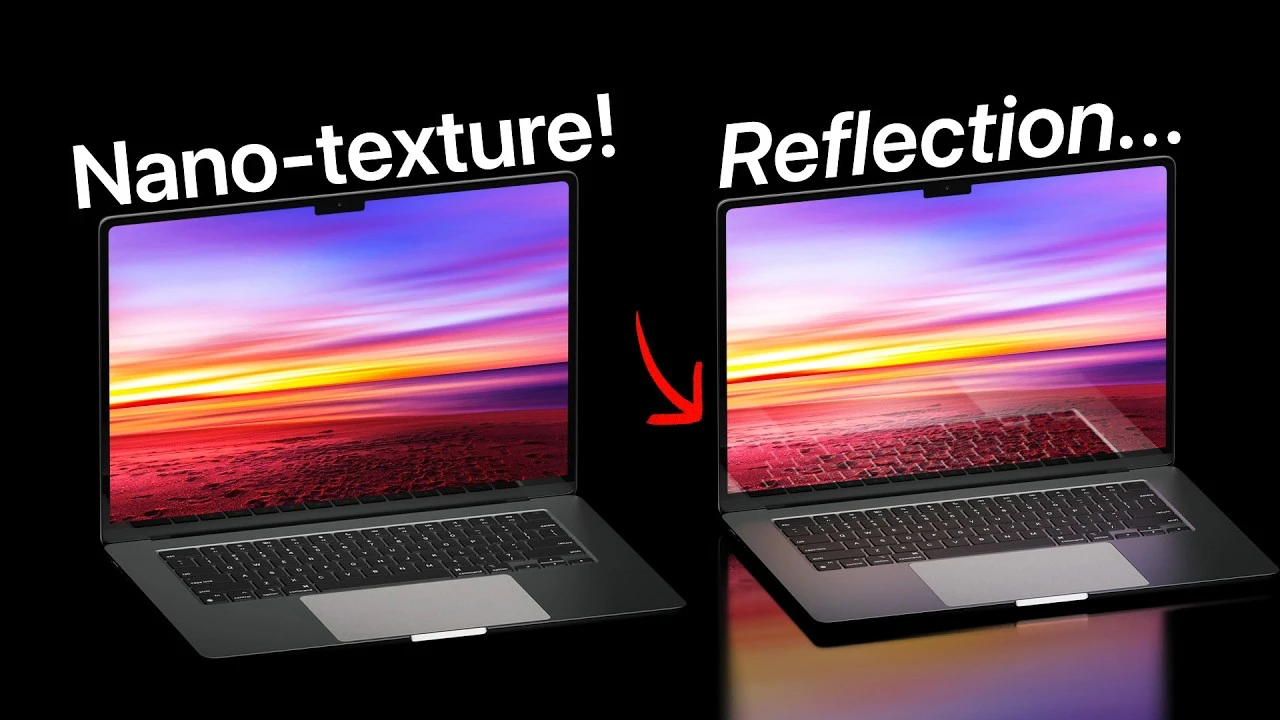
When it comes to selecting the perfect display for your M4 MacBook Pro, the decision often narrows down to two key options: the Nano-texture display and the standard glossy display. Each display type offers distinct advantages, and the right choice for you will depend on your unique requirements, working environment, and financial considerations. The video below from AppleDsigns compares these two displays side by side, empowering you to make a well-informed decision that aligns with your specific needs.
Reflections and Glare: The Crucial Differentiator
The primary and most noticeable difference between the Nano-texture display and the standard glossy display lies in their approach to handling reflections and glare. Designed with the goal of minimizing glare, the Nano-texture display employs advanced technology to diffuse incoming light effectively. This characteristic makes it particularly well-suited for environments with intense or variable lighting conditions, such as workspaces with expansive windows or overhead lighting. By successfully mitigating harsh reflections, the Nano-texture display ensures that your screen remains clearly visible and free from distractions, even in challenging lighting situations.
On the other hand, the standard glossy display features a high-gloss finish that enhances the overall visual sharpness and vibrancy of the screen. However, this glossy surface also tends to be more reflective, often mirroring its surroundings in well-lit environments. This reflective nature can be potentially distracting, especially if you frequently work in bright settings, and may necessitate adjustments to your seating arrangement or lighting configuration to minimize glare effectively.
Professions That Benefit Most from the Nano-Texture Display
The Nano-texture display proves particularly beneficial for professionals whose work demands a high level of precision and consistency in visual representation. Some key beneficiaries include:
- Photographers, graphic designers, and digital artists: These professionals will greatly appreciate the Nano-texture display’s ability to maintain accurate color representation, even in suboptimal lighting conditions. By reducing glare, the display ensures that colors remain true to life, which is essential for tasks such as photo editing, color grading, or digital illustration.
- Software developers, writers, and other professionals: For individuals who spend prolonged hours working in front of a screen, the Nano-texture display offers the significant benefit of reduced eye strain. By softening reflections and evenly diffusing light, it creates a more comfortable viewing experience, allowing you to focus on your work for extended periods without experiencing discomfort or fatigue.
Lighting Versatility and Color Performance
The Nano-texture display truly excels in environments with diverse or unpredictable lighting conditions. Whether you find yourself working under the warm glow of incandescent bulbs or the cooler tones of LED lights, the display’s ability to diffuse light effectively ensures consistent screen visibility. This adaptability makes it an incredibly versatile option for professionals who frequently alternate between different workspaces or encounter varying lighting situations throughout their workday.
In contrast, the standard glossy display thrives in controlled lighting environments. If you primarily use your MacBook Pro in a dedicated home office or studio with optimized lighting, the glossy display’s sharp contrast and deep black levels can greatly enhance your overall viewing experience. Its vibrant visuals are particularly appealing for tasks such as video streaming, casual photo editing, or general productivity work.
Cost Considerations and Value Proposition
While the Nano-texture display offers clear advantages in terms of glare reduction and adaptability to different lighting conditions, these benefits come at a higher price point compared to the standard glossy display. This premium upgrade is best suited for professionals who prioritize factors such as color accuracy, reduced glare, or prolonged screen use in their work. If your profession involves frequent collaboration in bright spaces or tasks that require precise visual representation, the investment in the Nano-texture display may prove to be well justified.
For general users who do not require these specialized features, the standard glossy display offers excellent performance at a more budget-friendly price point. It delivers vibrant visuals and sharp details, making it a practical and cost-effective choice for everyday use in controlled lighting environments.
Making the Right Display Choice for Your Needs
Ultimately, the decision between the Nano-texture display and the standard glossy display depends on your individual work habits, professional requirements, and the environments in which you typically use your M4 MacBook Pro. If you are a creative professional or someone who frequently works in bright or variable lighting conditions, the Nano-texture display offers significant advantages that can enhance your productivity, comfort, and the overall quality of your work. However, if you primarily use your MacBook Pro in a stable, well-lit setting and do not require advanced glare reduction features, the standard glossy display remains a high-quality and cost-effective option that delivers impressive visuals.
By carefully considering the strengths and benefits of each display type, you can make an informed decision that aligns perfectly with your specific needs and preferences. Whether you prioritize glare reduction and color accuracy or seek vibrant visuals at a more affordable price point, your choice of display for your M4 MacBook Pro can have a significant impact on optimizing your workflow, enhancing your creativity, and ensuring a comfortable and productive computing experience.
Source & Image Credit: AppleDsign
Latest Geeky Gadgets Deals
Disclosure: Some of our articles include affiliate links. If you buy something through one of these links, Geeky Gadgets may earn an affiliate commission. Learn about our Disclosure Policy.